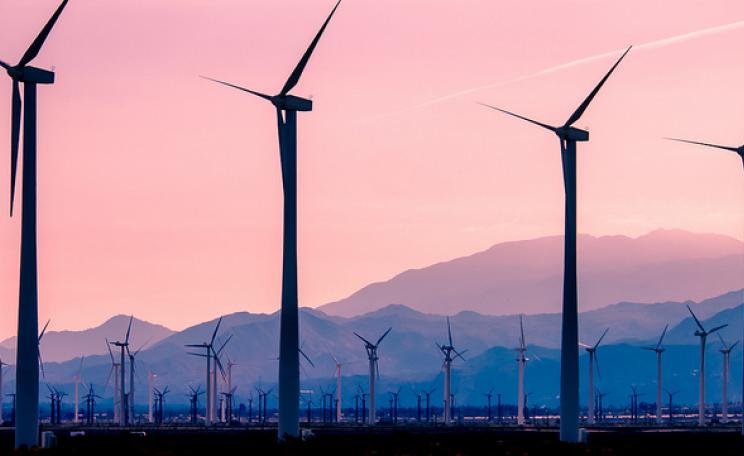-
The United Nations Environmental Programme (UNEP) has just published an updated version of its annual Emissions Gap Report.
This report studies how large the expected emission gap in 2030 will be between the current Nationally Determined Contributions (NDCs) and those that would be required to limit global warming to 1.5°C (or 2°C). The news is not good.
The current commitments of governments around the world will lead to an expected temperature rise of 3.2°C by the end of this century. In order to be able to limit climate change to a maximum of 1.5°C, a level that is believed to be associated with controllable climate damages (IPCC 2019), annual carbon emissions must drop significantly by 2030.
Emissions
Given the current climate efforts, annual emissions will be twice as high in 2030 than what would be necessary to limit global warming to 1.5°C.
Between today and 2030, annual global emissions must decrease by roughly 7 percent every year in order to achieve this target. Instead world emissions have continuously been on the increase.
If the world had started to reduce emissions already 10 years ago, then annual emission reductions would have only needed to be around 3 percent per year. If we were to continue as we are right now, then in 2025 annual emission reductions would need to be around 16 percent.
Thus, the longer the international community is unable to globally commit to serious mitigation efforts, the more stringent the annual emission reductions need to be, the required policies will be more costly, and coordinated actions will be more unlikely the longer we wait to take action.
Instead, adaptation needs are going to increase, which will take away finances necessary to support mitigation projects.
GDP
Taking a closer look at the emission profiles of country groups across the globe shows that the global share of global carbon emissions from low income countries is still negligible low.
High income countries have stabilized or even somewhat reduced overall carbon emissions since 2005, while middle income countries (especially China but also India) have significantly increased their CO2 emissions after the year 2000.
For example, China now produces around 1/4 of the world's CO2 emissions and India is the world’s third largest emitter with a 7 percent share of global emissions.
High income countries have (at least since 1960) always produced more GDP with fewer carbon emissions. The main events that led to reductions in GDP emissions were the 1979 oil crisis and the 2007 financial crisis. In the aftermath of these crises, CO2 emissions seem to grow more slowly with GDP.
In contrast, for middle income countries, CO2 emissions are much more important for creating GDP. In general, a euro of GDP in middle income countries is produced with more CO2 than in high income countries. One reason for this is, obviously, that the middle income countries still produce a large share of their energy with fossil fuels, their significantly smaller service sector, but also that a lot of the dirty industry is located within these countries.
Growth
It is clear that if middle income countries were to catch up to the high income countries in terms of GDP, then based on their current production methods their CO2 emissions would at least double.
There is no way that the world will see the required annual decrease of 7 percent in carbon emissions if the middle income countries continue to grow in the way they did in the past.
Both China and India are the two countries in the world with the most significant population and with a growth potential that has huge implications for the global carbon budget. Based on the proposed NDCs, India plans to reduce its energy intensity over the next years.
However, this is not going to reduce its total CO2 emissions which are nevertheless expected to continue to increase. The NDCs may not even slow down India’s growth of CO2 emissions.
Similarly, China’s NDCs will imply further increases to its carbon emissions, albeit at a slower rate than during the past two decades. Both efforts are nowhere near the required 7 percent annual decrease.
If the growth in CO2 emissions from China and India continues in the way the NDCs have outlined, then soon both countries will produce as much CO2 as is currently produced by all the countries in the world together.
Solutions
To state it bluntly: The NDC pledges do not work. Without a coordinated effort among countries, this non-cooperative approach that follows the Paris Agreement is going to lead to a significant overshooting of the 1.5°C threshold.
Most countries’ NDCs are also far too unambitious for the 1.5°C target, and the CO2 emissions growth of these India and China alone will overcompensate for the reduction efforts in CO2 emissions from the developed world.
Hence, a potential solution would be to substantially increase international technology transfers as well as financial transfers in order to help these countries to put the energy infrastructure in place that is needed to reduce emissions.
Let us assume that the next COP meeting gets us closer to a global carbon market, and that the full implementation then takes (a reasonable) three to four years. In that case the required annual global emission reductions to limit warming to 1.5°C will be around 15 percent. Annual emission reductions of that size will only work if all countries are fully committed to a coordinated, cooperative effort. Unfortunately, this is something that the non-cooperative NDCs are not designed for.
Annual emission reductions of that size will only work if all countries are fully committed to a coordinated, cooperative effort. Unfortunately, this is something that the non-cooperative NDCs are not designed for.
This Author
Ingmar Schumacher is professor of environmental economics at the IPAG Business School in France.






